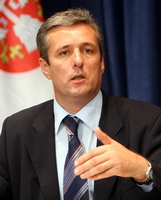- Serbia
Get to know Serbia
- Citizens
Culture and science
Health services
Pension and disability insurance
- Business
Employment
Economy
- Media
- Government
- Contact
Keep in touch
Contact form
Back
Keepin touch
Whether you have a question, comment, suggestion or any problem in the purview of the government, send us your message and we will try to respond as soon as possible. If your problem is not in our purview, we will forward your message to the relevant institution.
Q:
A:
Over RSD 2 billion to be set aside for active employment measures
Belgrade,
13 June 2007
State Secretary at the Ministry of Economy and Regional Development Vladimir Ilic said today that over RSD 2 billion should be set aside from the state budget this year for active employment measures, which is RSD 700,000 million more than last year.
Ilic said at a press conference that the Ministry's aim is to reduce the current 21.6% unemployment rate in Serbia by half over the next five years.
The National Employment Service will conduct active employment measures, such as counselling of unemployed, work with employers, organisation of employment fairs and career guidance.
The State Secretary said that taxes on salaries will continue to be reduced until 2009 at the latest, from the current RSD 62 for RSD 100 of the net salary to RSD 50.
Ilic recalled that the reduction of taxes on salaries started in late 2006 and that this measure has shown excellent results in practice. In addition, with its introduction, the Serbian budget has lost much less funds than expected.
Additional education and training, which included 10,000 unemployed last year, is a somewhat more expensive active employment measure and its implementation should be continued so as to harmonise the supply and demand on the labour market, Ilic explained.
The programme of subsidising the unemployed should be continued, which costs approximately €1,500 per person and which, among other things, includes self-employment or participation in public works.
Ilic said that a programme of business start-up loans will start as of September, with a five-year repayment period, an annual interest rate of 1%, a one-year grace period and no mortgage is required.
The State Secretary said that the state has planned to set aside €30 million in subsidies for employers who employ up to 15,000 workers.
The priority will also be employment of the young below 30 years of age, whose unemployment rate stands at 48% and is two times higher than the overall unemployment rate, Ilic pointed out.
Another priority will be the employment of people who were laid-off during privatisation. The state will help them use their severance pay to find a job again. According to statistics, around 2.7 million people are currently employed in Serbia and 692,000 are unemployed, said Ilic and added that 62% of the working population works in the private sector, as well as that gender inequality is evident since women’s unemployment rate is 24% and men’s 16%.
He said that around 200,000 people, that is, 30% of those who are officially unemployed, work in the “grey” economy, and 55% of those registered at the National Employment Service have been out of work for quite some time. The average period before getting a job is four years and the average age of the unemployed is 39 years.
According to Ilic, only Bosnia and Herzegovina, Macedonia and Montenegro have higher unemployment rates than Serbia, whereas the average unemployment rate in EU countries stands at 7.6% and heading downwards.
The highest unemployment rates in EU countries are marked in Poland (12%) and the Slovak Republic (11%), specified Ilic and stressed that a precondition for reducing this rate is the speed at which Serbia will join the EU and attraction of more greenfield investments.
The National Employment Service will conduct active employment measures, such as counselling of unemployed, work with employers, organisation of employment fairs and career guidance.
The State Secretary said that taxes on salaries will continue to be reduced until 2009 at the latest, from the current RSD 62 for RSD 100 of the net salary to RSD 50.
Ilic recalled that the reduction of taxes on salaries started in late 2006 and that this measure has shown excellent results in practice. In addition, with its introduction, the Serbian budget has lost much less funds than expected.
Additional education and training, which included 10,000 unemployed last year, is a somewhat more expensive active employment measure and its implementation should be continued so as to harmonise the supply and demand on the labour market, Ilic explained.
The programme of subsidising the unemployed should be continued, which costs approximately €1,500 per person and which, among other things, includes self-employment or participation in public works.
Ilic said that a programme of business start-up loans will start as of September, with a five-year repayment period, an annual interest rate of 1%, a one-year grace period and no mortgage is required.
The State Secretary said that the state has planned to set aside €30 million in subsidies for employers who employ up to 15,000 workers.
The priority will also be employment of the young below 30 years of age, whose unemployment rate stands at 48% and is two times higher than the overall unemployment rate, Ilic pointed out.
Another priority will be the employment of people who were laid-off during privatisation. The state will help them use their severance pay to find a job again. According to statistics, around 2.7 million people are currently employed in Serbia and 692,000 are unemployed, said Ilic and added that 62% of the working population works in the private sector, as well as that gender inequality is evident since women’s unemployment rate is 24% and men’s 16%.
He said that around 200,000 people, that is, 30% of those who are officially unemployed, work in the “grey” economy, and 55% of those registered at the National Employment Service have been out of work for quite some time. The average period before getting a job is four years and the average age of the unemployed is 39 years.
According to Ilic, only Bosnia and Herzegovina, Macedonia and Montenegro have higher unemployment rates than Serbia, whereas the average unemployment rate in EU countries stands at 7.6% and heading downwards.
The highest unemployment rates in EU countries are marked in Poland (12%) and the Slovak Republic (11%), specified Ilic and stressed that a precondition for reducing this rate is the speed at which Serbia will join the EU and attraction of more greenfield investments.
-
 Belgrade, 22 January 2025
Belgrade, 22 January 2025Egypt one of Serbia’s closest partners on international stage
-
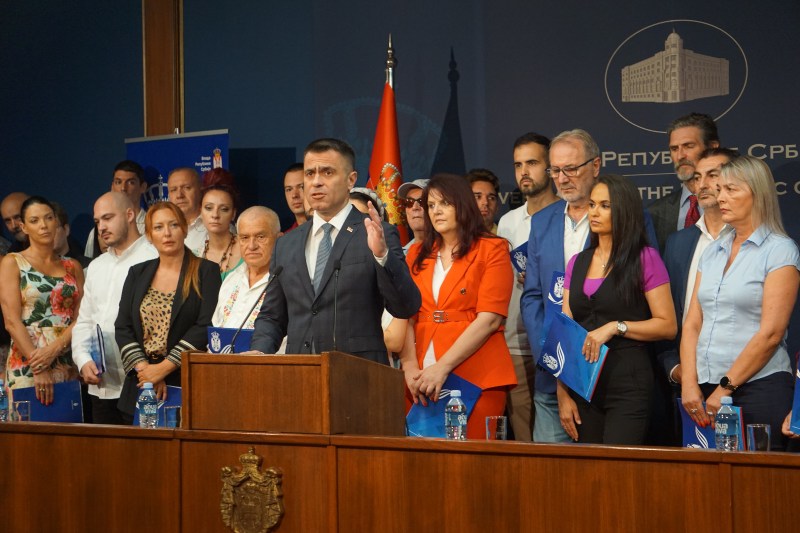 Belgrade, 9 July 2024
Belgrade, 9 July 2024Support for 104 associations in diaspora that preserve Serbian language, culture
-
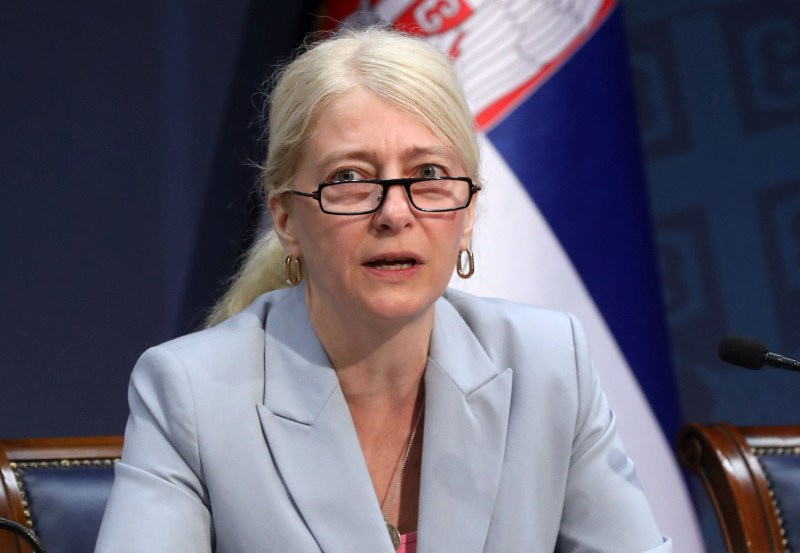 Belgrade, 15 April 2024
Belgrade, 15 April 2024Competition for StarTech grants open until 31 May
-
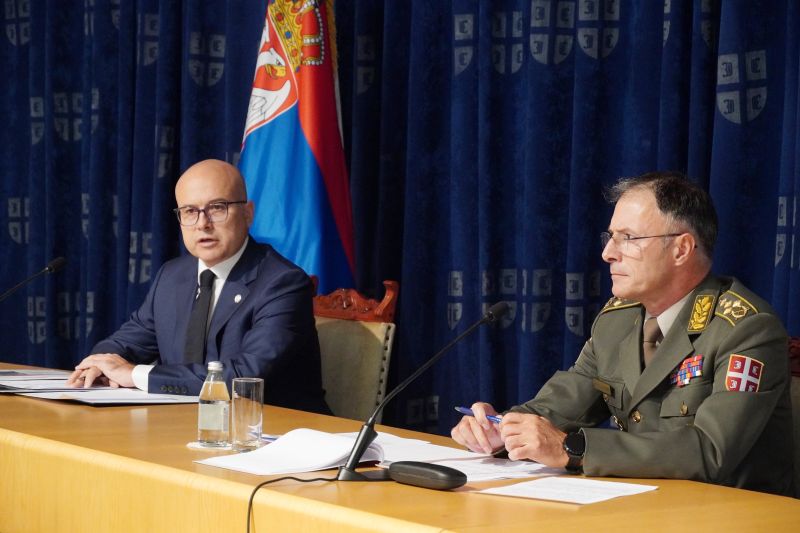 Belgrade, 2 October 2023
Belgrade, 2 October 2023Serbia respects Resolution 1244 and will do everything to preserve peace
-
 Belgrade, 13 September 2023
Belgrade, 13 September 2023Day of Serbian Unity to be celebrated outside borders of Serbia, Republika Srpska for the first time
-
 Belgrade, 8 August 2023
Belgrade, 8 August 2023RSD 24.2m in state aid paid out to citizens affected by storm
-
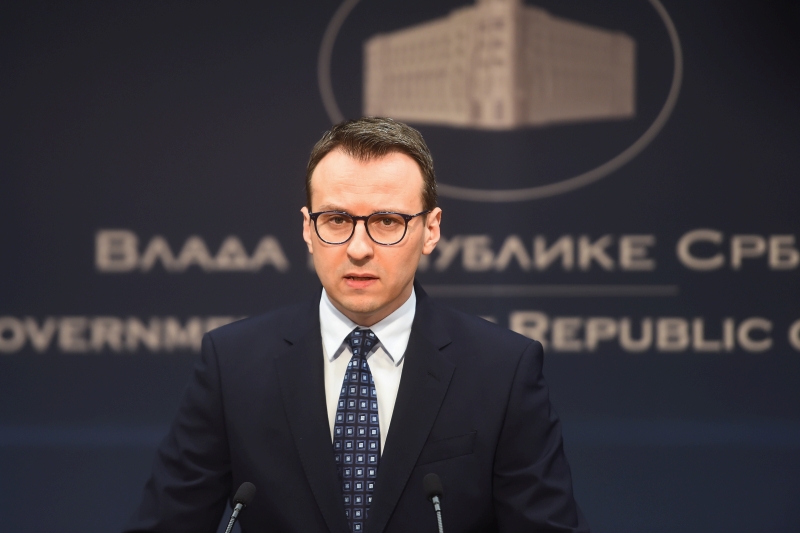 Belgrade, 17 June 2023
Belgrade, 17 June 2023Belgrade is doing everything to preserve peace in Kosovo and Metohija
-
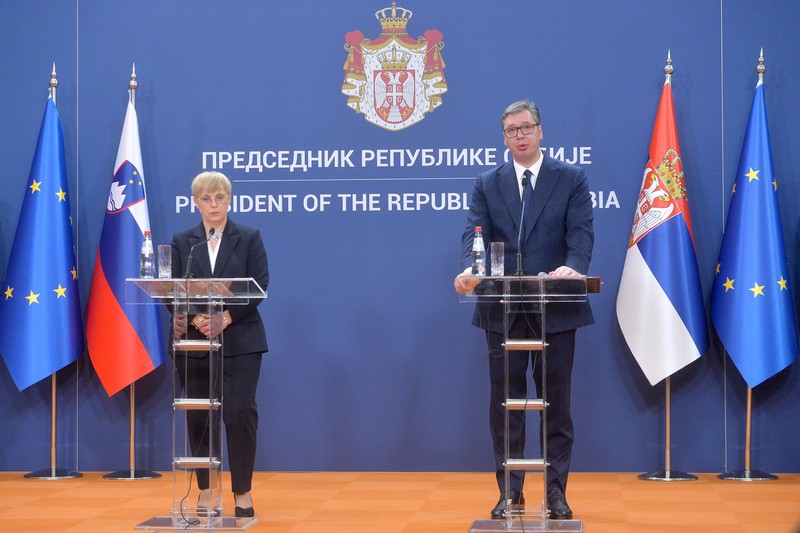 Belgrade, 15 June 2023
Belgrade, 15 June 2023Slovenia will continue to support Serbia on its way to EU
-
 Belgrade, 5 May 2023
Belgrade, 5 May 2023Emergency measures, tightening of conditions for possessing weapons
-
 Belgrade, 3 May 2023
Belgrade, 3 May 2023Three days of mourning in Serbia over tragedy at Vladislav Ribnikar primary school

